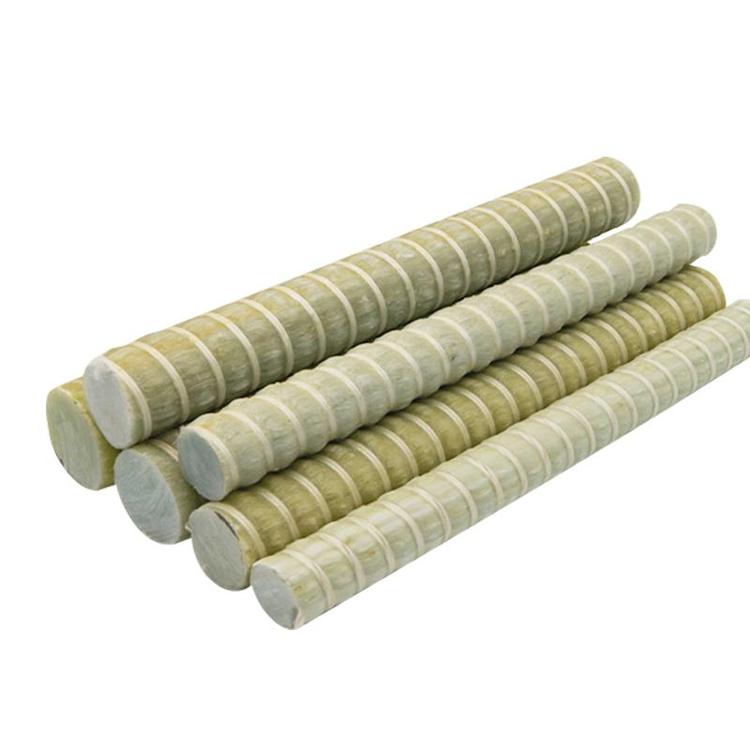Introduction
The construction industry has witnessed significant advancements in material science, leading to the adoption of innovative solutions that enhance building performance and sustainability. Among these innovations, the GFRP Insulation Connector stands out as a revolutionary component that addresses thermal bridging and structural concerns in modern constructions. This article delves into the applications and benefits of GFRP Insulation Connectors, highlighting their impact on contemporary building practices.
Understanding GFRP Insulation Connectors
Glass Fiber Reinforced Polymer (GFRP) Insulation Connectors are composite materials designed to connect insulated concrete elements without compromising the thermal barrier. They are constructed using high-strength glass fibers embedded in a polymer matrix, offering exceptional mechanical properties while minimizing thermal conductivity. The unique composition of GFRP connectors makes them ideal for use in energy-efficient buildings where thermal insulation is paramount.
Composition and Manufacturing Process
The manufacturing of GFRP Insulation Connectors involves pultrusion, a continuous process where reinforcing fibers are saturated with a resin and pulled through a heated die. This method ensures consistent cross-sectional profiles and superior material properties. The resulting connectors exhibit high tensile strength, corrosion resistance, and low thermal conductivity, essential for structural integrity and energy efficiency.
Applications in Modern Construction
GFRP Insulation Connectors are increasingly utilized in various construction applications where thermal performance and structural support are critical. Some of the prominent applications include:
Facade Systems
In facade construction, maintaining the continuity of insulation is essential to prevent thermal bridging. GFRP connectors enable the secure attachment of facade panels to structural frames without creating thermal paths that can lead to energy loss. This application is particularly beneficial in curtain wall systems and cladding installations.
Insulated Concrete Sandwich Panels
GFRP Insulation Connectors are integral to the design of insulated concrete sandwich panels. These panels consist of an insulating core sandwiched between two layers of concrete. The connectors provide structural linkage while preserving the thermal barrier, resulting in panels that offer both load-bearing capacity and exceptional thermal performance.
Balcony and Canopy Connections
Thermal bridging can be a significant issue in balcony and canopy connections due to the extension of structural elements through the building envelope. GFRP connectors mitigate this problem by providing a thermally efficient connection that reduces heat flow, enhancing the overall energy efficiency of the building.
Benefits of GFRP Insulation Connectors
The adoption of GFRP Insulation Connectors offers multiple benefits, ranging from improved thermal performance to enhanced durability. Key advantages include:
Thermal Efficiency
GFRP materials have low thermal conductivity compared to traditional steel connectors. This property significantly reduces thermal bridging, leading to better insulation performance and lower energy costs for heating and cooling. Studies have shown that buildings utilizing GFRP connectors can achieve up to a 30% improvement in thermal resistance.
Corrosion Resistance
Unlike steel, GFRP connectors are resistant to corrosion caused by environmental factors such as moisture, chemicals, and salts. This resistance extends the service life of the connectors and reduces maintenance costs. In coastal regions and industrial environments, the durability of GFRP is particularly advantageous.
High Strength-to-Weight Ratio
GFRP connectors offer a high strength-to-weight ratio, providing the necessary structural support without adding significant weight to the building. This characteristic simplifies handling and installation, potentially reducing labor costs and construction time.
Non-Conductive Properties
The non-conductive nature of GFRP materials eliminates concerns related to electrical conductivity. This feature enhances safety in structures where electrical insulation is crucial, such as in hospitals, laboratories, and power facilities.
Case Studies and Real-World Applications
Several projects worldwide have successfully integrated GFRP Insulation Connectors, demonstrating their practical benefits:
The Edge Building, Amsterdam
Known as one of the world's most sustainable office buildings, The Edge utilized GFRP connectors in its facade system. The connectors contributed to the building's outstanding thermal performance, helping it achieve a BREEAM score of 98.36%, the highest ever awarded at the time.
North American Residential Developments
In Canada and the United States, residential buildings have adopted GFRP connectors in insulated concrete forms (ICFs). Homeowners benefit from the energy savings due to reduced thermal bridging, and builders appreciate the ease of installation and longevity of the connectors.
Design Considerations and Best Practices
When incorporating GFRP Insulation Connectors into a project, certain design considerations ensure optimal performance:
Load Capacity Analysis
Engineers must evaluate the load-bearing requirements of the structure to select connectors with appropriate mechanical properties. GFRP connectors come in various dimensions and strengths to accommodate different structural demands.
Thermal Modeling
Conducting thermal simulations helps in understanding the impact of connectors on the building's overall thermal performance. This modeling assists in optimizing the placement and quantity of connectors to minimize thermal bridging.
Compliance with Building Codes
GFRP connectors must meet local building codes and standards. In the United States, for instance, they should comply with guidelines set by the American Concrete Institute (ACI) and the National Building Code (NBC) in Canada.
Environmental Impact and Sustainability
Sustainability is a driving force in modern construction, and GFRP Insulation Connectors contribute positively in this regard:
Energy Savings
By reducing thermal bridging, buildings consume less energy for heating and cooling. According to the U.S. Department of Energy, minimizing thermal bridges can lead to energy savings of up to 15% in residential buildings.
Reduced Greenhouse Gas Emissions
Lower energy consumption translates to reduced greenhouse gas emissions. Implementing GFRP connectors aligns with global efforts to combat climate change by decreasing the carbon footprint of buildings.
Longevity and Lifecycle Benefits
The durability of GFRP connectors means fewer replacements over the building's lifespan. This longevity reduces resource consumption and waste generation associated with maintenance and repairs.
Challenges and Considerations
While GFRP Insulation Connectors offer numerous benefits, certain challenges warrant attention:
Initial Costs
The upfront cost of GFRP connectors can be higher than traditional materials. However, the long-term energy savings and reduced maintenance can offset these initial expenses. Life-cycle cost analysis is essential to evaluate the economic benefits accurately.
Material Behavior Understanding
Designers and engineers may require additional education on the properties and behavior of GFRP materials. Comprehensive understanding ensures appropriate application and maximizes the benefits of the connectors.
Future Trends and Developments
The use of GFRP Insulation Connectors is expected to grow as the construction industry continues to prioritize energy efficiency and sustainability. Future developments may include:
Enhanced Material Properties
Ongoing research aims to improve the mechanical and thermal properties of GFRP materials. Innovations such as nano-reinforcements and hybrid composites could lead to connectors with superior performance characteristics.
Standardization and Certification
As adoption increases, the development of standardized testing methods and certification processes will help ensure product quality and reliability. This standardization will facilitate broader acceptance in the industry.
Conclusion
The GFRP Insulation Connector represents a significant advancement in construction materials, offering solutions to thermal bridging and structural challenges. Its applications in modern construction underscore the industry's shift towards sustainable and energy-efficient building practices. By embracing such innovative materials, architects and engineers can design structures that not only meet the demands of today but also contribute positively to the environment and future generations.




























